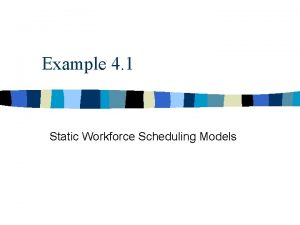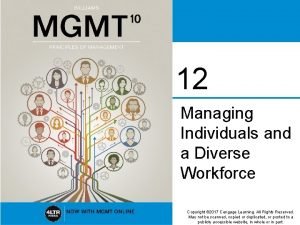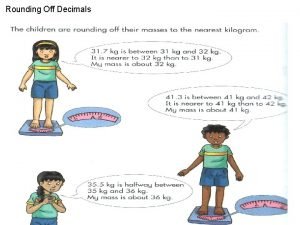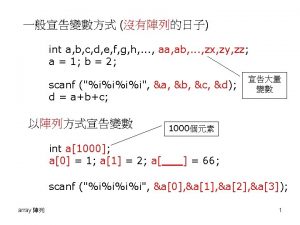Workforce scheduling Days off scheduling 1 Workforce scheduling






- Slides: 6

Workforce scheduling – Days off scheduling • 1

Workforce scheduling – Days off scheduling • n is the max weekend demand n = max(n 1, n 7) • Surplus number of employees in day j is uj = W – nj for j = 2, …, 6 and uj = n-nj for j = 1, 7 • Since max weekend demand is n the remaining W-n can take the weekend off • See text for the heuristic and an example 2

Shift scheduling • m time intervals that are not equal • During each time interval i, i = 1, …, m, bi personnel are required • n different shift patterns and each employee is assigned to only one pattern j, j = 1, …, n • Shift pattern j is denoted as vector (a 1 j, a 2 j, …, amj) where aij = 1 if period i is a working period in shift j • cj is the cost of assigning a person to shift j • xj is the number of people assigned to shift j • Solve using integer programming Min cx st Ax≥b x≥ 0, x = integer a 11………. ain A= a 21. . a 2 n am 1………. amn • Strongly NP Hard- hence use LP relaxation and solve in polynomial time. • Easy to solve if each column has a contiguous set of 1’s • Or use heuristics 3

Cyclic Staffing Problem • Minimize the cost of assigning people to a m-period cyclic schedule • Sufficient workers are available at time i to meet the demand of bi • Each person works a shift of k consecutive periods and is off for the m-k periods • Period m is followed by period 1 • xj is the number of people assigned to shift j • A = 1001111 1100111 for a 7 day cycle with 2 consecutive days off 1110011 and so on 4

Cyclic Staffing Problem • • Solve the LP relaxation an obtain xj’ = x 1’ , ……, xn’ If xj’ are integers then it is the optimal solution. STOP Else from two LPs LP’ LP” and add constraint x 1 + x 2 +, …, + xn = x 1’ +, ……, + xn’ (rounded to the lower side) to the original problem and solve LP’ x 1 + x 2 +, …, + xn = x 1’ +, ……, + xn’ (rounded to the upper side) to the original problem and solve LP” has an optimal solution that is integer If LP’ does not have a feasible solution then LP” is optimal If LP’ has a feasible solution, then it has an optimal solution that is integer and the solution to the original problem is the better one among the solutions to LP’ and LP” 5

Crew Scheduling • m jobs – flight legs i = I, …, m • n - feasible and all possible combinations of flight legs that a crew can handle – these are n feasible and all possible round trips j, j = 1, …, n that can be generated from the flight legs. • cj cost of round trip j • Each flight leg must be covered by exactly one round trip bi = 1 • Minimize cost • aij is 1 if flight leg i is covered by round trip j • xj is 0 -1 variable and denotes whether a round trip is selected. Min cx a 11………. ain st Ax=1 A= a 21. . a 2 n x=0 -1, x = integer am 1………. amn • NP hard. So use heuristics 6











